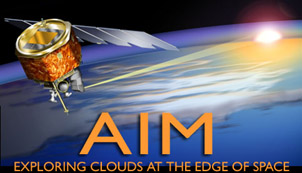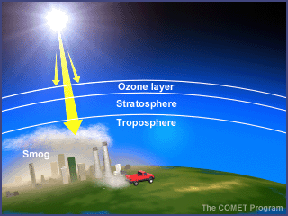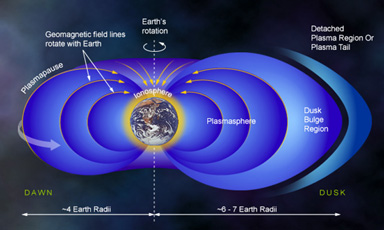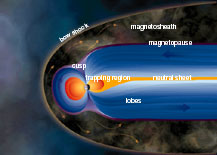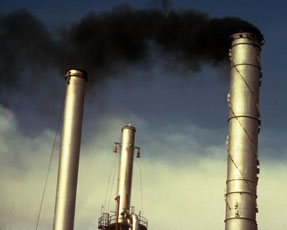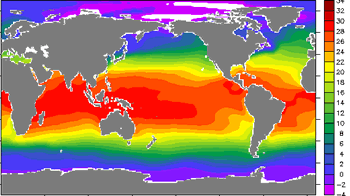Click on image for full size
Courtesy of NASA (Hampton University)
Space Missions to study Earth's Atmosphere & Climate
Some satellites study Earth from space. Some of them study our atmosphere and weather. Some take pictures of clouds. Others use special instruments to make measurements of temperature, humidity, or the types of gases in the atmosphere.
Aura is a satellite that blasted off in July 2004. It is studying pollution, gases that may be related to climate change, and ozone. IMAGE (Imager for Magnetopause-to-Aurora Global Exploration) has been in space studying the plasmasphere since March 2000. Polar was launched in 1996. Polar looks at the aurora and the magnetosphere. UARS (Upper Atmosphere Research Satellite) is an older satellite that has been in space since 1991. Some of its instruments have stopped working, but others are still good. UARS studies the chemistry in the stratosphere.
Some satellites for studying weather will be launched in the years ahead. COSMIC (Constellation Observing System for Meteorology, Ionosphere & Climate) is a group of satellites that will be blast off in 2005. They will gather data about temperature and humidity in the atmosphere. AIM (Aeronomy of Ice in the Mesosphere) will study noctilucent clouds in the mesosphere. AIM's mission will start in 2006.
Some older satellites don't work any more, but made important measurements when they were working. SNOE (Student Nitric Oxide Explorer) studied the gas nitric oxide in the thermosphere from 1998 to 2003. Seven Nimbus satellites, which flew between 1964 through 1994, made many measurements of the atmosphere. A bunch of satellites, called GOES (Geostationary Operational Environmental Satellite), have helped with weather predictions since 1975. Most GOES have stopped working, but GOES-8 and GOES-10 are still on the job.


